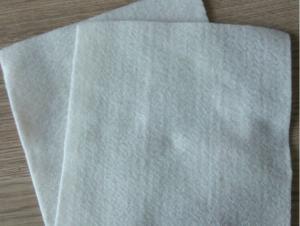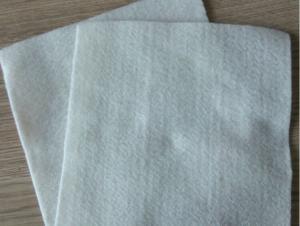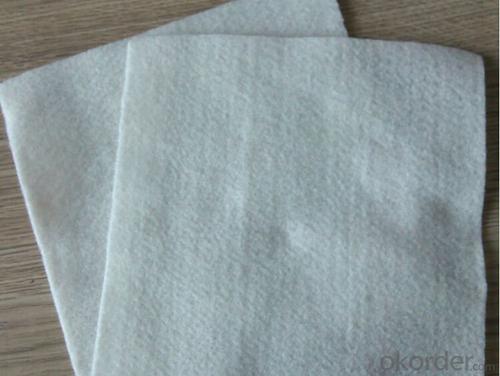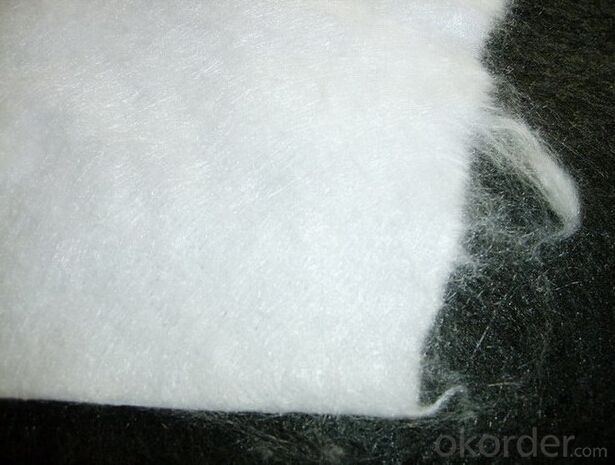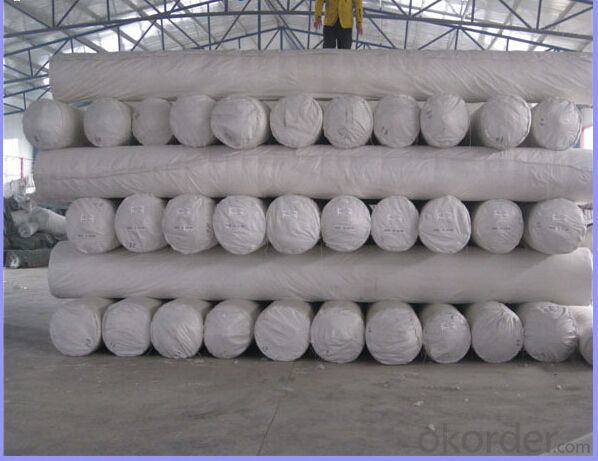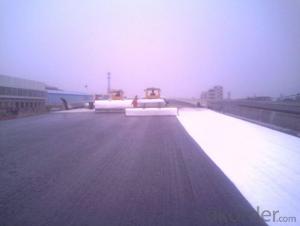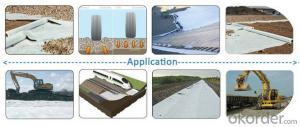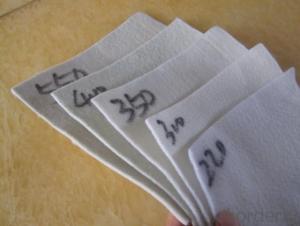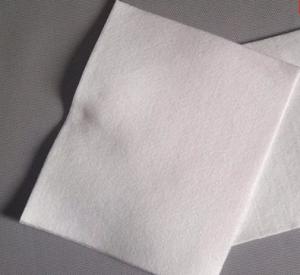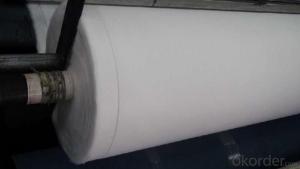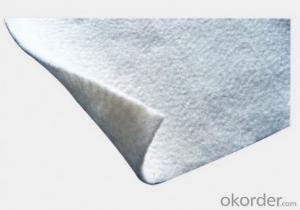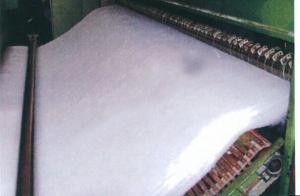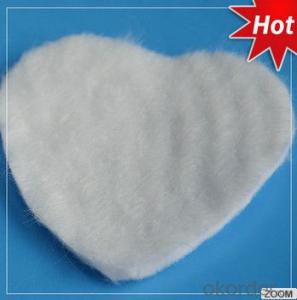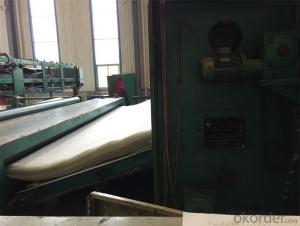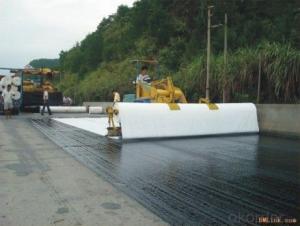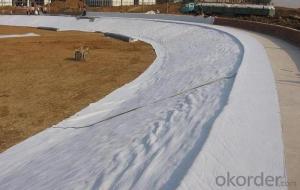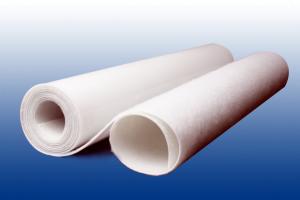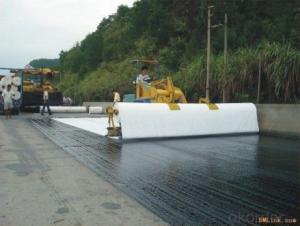Ace Geotextile - Polyester Continuous Filament Spunbond Needle Punched Nonwoven Geotextile 100g-800g
- Loading Port:
- China Main Port
- Payment Terms:
- TT or LC
- Min Order Qty:
- 5000 Square Meters m²
- Supply Capability:
- 120000 Square Meters Per Week m²/month
OKorder Service Pledge
OKorder Financial Service
You Might Also Like
Polyester Continuous Filament Spunbond Needle Punched Nonwoven Geotextile 100g-800g
1. Specifications for Polyester Continuous Filament Spunbond Needle Punched Nonwoven Geotextile 100g-800g
Name: Filament Spunbond Needle Punched Nonwoven Geotextile
Geotextile Type: Nonwoven geotextile
Width: 1.0-6.0m or as request
Length: 50m/100m or as request
Weight: 100g-800g or as request
Color: white, black, grey, brown,
Material: PP or PET
Certificate: ISO9001 ISO14001 BV
Function: separation/filter/reinforcement
2. Features for Polyester Continuous Filament Spunbond Needle Punched Nonwoven Geotextile 100g-800g
Engineered to provide high strength and high elongation at break to ensure excellent resistance to damage during construction
Manufactured from high tenacity UV stabilised virgin polypropylene or polyester fibers which have been heavily drawn to ensure excellent long term durability in all soil types.
Manufactured using a randomly orientated web to proide completely isotropic properties,ensuring that high strength is not limited to a single direction.
Excellent uniformity with high permeability and low pore size for soil filtration.
Supplied to a maximum width of 6.5mts,ensuring minimum waste over large construction areas.
100% polypropylene or polyester staple fibers ,needle punched and random network formation.
UV and rot resistant and biological degradation resistant.
3. Application for Polyester Continuous Filament Spunbond Needle Punched Nonwoven Geotextile 100g-800g
Road stabilization applications
Roofs
Civil applications
Railway work
Landfill lining
Trenches
Dams
Fitration under rip rap and rocks
Environmental applications
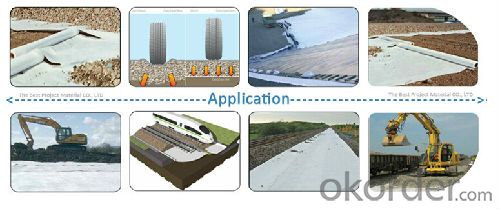
4. Packing and Shiping for Polyester Continuous Filament Spunbond Needle Punched Nonwoven Geotextile 100g-800g

- Q: What are the different installation methods for geotextiles?
- There are several installation methods for geotextiles, including direct placement, trenching, and mechanical installation. In direct placement, the geotextile is simply laid over the desired area and secured in place with stakes or sandbags. Trenching involves digging a trench and placing the geotextile in the trench before backfilling. Mechanical installation utilizes specialized equipment, such as a geotextile roller or a geotextile gun, to install the geotextile quickly and efficiently. The choice of installation method depends on the specific project requirements and site conditions.
- Q: How much is the price of anti-geotextile?
- In the actual engineering procurement, generally between the two geotextiles need about> 250px lap, so the procurement is usually based on the actual area plus 15% to 20% loss. Hongxiang new material Li Qian geotextile price is also required according to the specific needs of the project to specify the model, the specific offer.
- Q: Can geotextiles be used for livestock waste management?
- Yes, geotextiles can be used for livestock waste management. They are commonly used as liners in lagoons or ponds to separate and contain livestock waste, preventing it from contaminating groundwater or nearby water bodies. Geotextiles can effectively filter and separate solid waste from liquid, allowing for proper waste management and reducing environmental impacts.
- Q: What are the different geotextile installation techniques in slope stabilization?
- Some of the different geotextile installation techniques in slope stabilization include anchoring the geotextile at the top and bottom of the slope, creating a reinforced soil slope with layers of geotextile and soil, and using geotextile wraps or sleeves to contain and reinforce specific areas of the slope. These techniques help prevent erosion, improve slope stability, and promote vegetation growth.
- Q: Designers give blind ditch length of 540m, geotextile for 2835m2 more
- Too professional. You ask the manufacturers, music built
- Q: Can geotextiles be used in geocomposite applications?
- Yes, geotextiles can indeed be used in geocomposite applications. Geotextiles are often combined with other materials, such as geomembranes or geogrids, to create geocomposites that offer enhanced performance in various geotechnical and environmental applications. Geocomposites provide improved filtration, drainage, separation, and reinforcement properties, making them suitable for a wide range of civil engineering projects, including road construction, erosion control, landfill engineering, and drainage systems.
- Q: How do geotextiles help with soil confinement in erosion control mats?
- Geotextiles help with soil confinement in erosion control mats by providing a stable and permeable layer that prevents soil erosion. They act as a barrier, holding the soil particles in place while allowing water to pass through, thereby reducing surface runoff and promoting root growth. This prevents the displacement of soil and helps in establishing vegetation, ultimately preventing erosion and improving soil stabilization.
- Q: Geotextile pp-65-4-600 what it means
- PP plastic raw materials, chemical name: polypropylene, that is, polypropylene geotextile, a square meter of 600 grams of weight. Henkel Building Materials
- Q: Are geotextiles suitable for use in contaminated soil remediation projects?
- Yes, geotextiles are suitable for use in contaminated soil remediation projects. Geotextiles have been proven to be effective in separating and stabilizing soil layers, preventing soil erosion, and controlling sedimentation. They can also act as a barrier to prevent the spread of contaminants, while allowing for proper drainage and filtration. Additionally, geotextiles are durable, cost-effective, and environmentally friendly, making them a suitable choice for remediation projects.
- Q: Can geotextiles be used in geotechnical engineering?
- Yes, geotextiles can be used in geotechnical engineering. Geotextiles are permeable fabrics made from synthetic fibers and are commonly used in various geotechnical applications such as soil stabilization, erosion control, filtration, drainage, and reinforcement. They offer numerous benefits in geotechnical engineering projects, including improved soil strength, increased load-bearing capacity, and enhanced drainage and filtration capabilities. Geotextiles are widely employed in the construction of roads, embankments, retaining walls, landfills, and other geotechnical structures to enhance their overall performance and longevity.
1. Manufacturer Overview
| Location | 示范:Hebei, China |
| Year Established | 示范:1997 |
| Annual Output Value | 示范:Above US$50 Million |
| Main Markets | 30.00% South America; 20.00% North America; 15.00% Eastern Europe; 15.00% Southeast Asia; 10.00% South Asia; 5.00% Southern Europe; 5.00% Africa |
| Company Certifications | ISO 9001:2008 |
2. Manufacturer Certificates
| a) Certification Name | |
| Range | |
| Reference | |
| Validity Period |
3. Manufacturer Capability
| a) Trade Capacity | |
| Nearest Port | Tianjin;Qingdao;Shanghai |
| Export Percentage | |
| No.of Employees in Trade Department | 21-50 People |
| Language Spoken: | English;Chinese |
| b) Factory Information | |
| Factory Size: | Above 100,000 square meters |
| No. of Production Lines | Above 12 |
| Contract Manufacturing | OEM Service Offered;Design Service Offered |
| Product Price Range | High;Average |
Send your message to us
Ace Geotextile - Polyester Continuous Filament Spunbond Needle Punched Nonwoven Geotextile 100g-800g
- Loading Port:
- China Main Port
- Payment Terms:
- TT or LC
- Min Order Qty:
- 5000 Square Meters m²
- Supply Capability:
- 120000 Square Meters Per Week m²/month
OKorder Service Pledge
OKorder Financial Service
Similar products
Hot products
Hot Searches
Related keywords
